#agamid lizard
Explore tagged Tumblr posts
Text
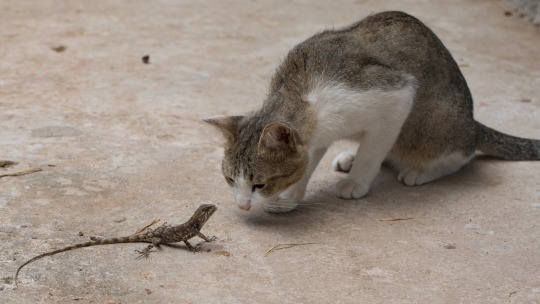
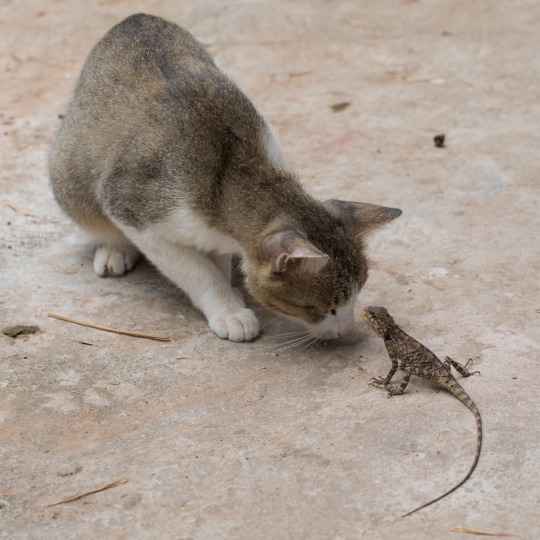
Curious cat staring at a lizard (1/2)
“Curious Felis silvestris catus (domestic cat) staring at a passive Calotes versicolor (Oriental garden lizard), in Laos.” - via Wikimedia Commons
#wikipedia#wikipedia pictures#wikimedia commons#nature#animals#cat#catblr#lizard#reptiles#domesticated animals#domestic cat#f. catus#c. versicolor#felinae#felidae#feliformia#carnivora#reptilia#squamata#iguania#agamidae#agamid lizard#common garden lizard#oriental garden lizard#indian garden lizard#eastern garden lizard#changeable lizard#catcore#cats#catsoftheworld
89 notes
·
View notes
Text

Ptyctolaemus chindwinensis, a species of agamid lizard.
Image © Shuo Liu.
28 notes
·
View notes
Text

A ground agama (Agama aculeata) in a tree in Kgalagadi Transfrontier Park, South Africa
by jaffles
#ground agama#agamids#lizards#reptiles#agama aculeata#agama#agamidae#squamata#reptilia#chordata#wildlife: south africa#wildlife: africa
70 notes
·
View notes
Text
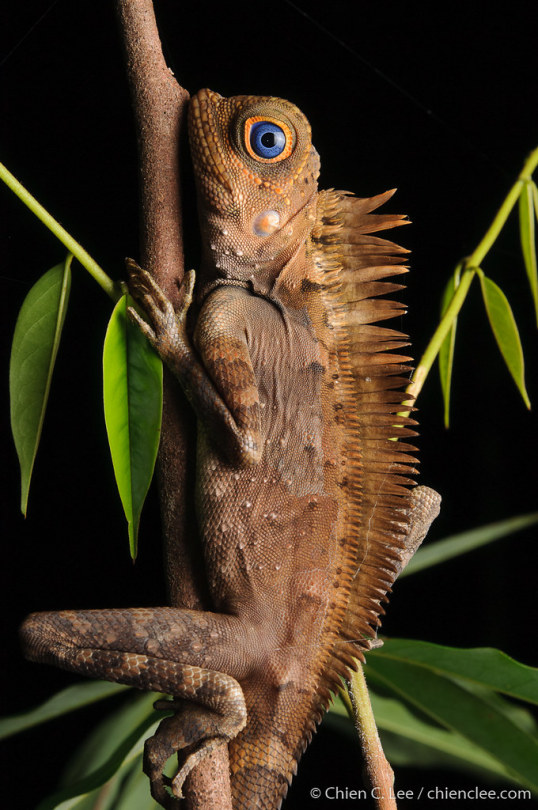
#IFTTT#Flickr#agamidae#animal#fauna#southeastasia#dragon#reptile#wildlife#lizard#sarawak#malaysia#borneo#tropical#reptilia#sauria#squamata#eastmalaysia#agamid#angleheadedlizard#gonocephalus#draconinae
42 notes
·
View notes
Text
Top ten (in no particular order) lizard species I've never kept that I would keep if I had unlimited time, space, and money for lizard care
uromastyx thomasi

uromastyx philbyi

toad-headed agama

xenagama taylori

saara hardwickii

butterfly agama

blue-tongued skink

shingleback skink

savannah monitor

rhinoceros iguana

#of course my favorite lizards are the ones I have#but this is my definitive dream reptile list#clearly I am an agamid guy#lizards#reptiles
5 notes
·
View notes
Photo

Four new species of the genus Diploderma Hallowell, 1861 (Squamata, Agamidae) from China
Shuo Liu, Mian Hou, Natalia B. Ananjeva, Dingqi Rao
Abstract
Four new species of Diploderma are described from Sichuan and Yunnan provinces, southwestern China, based on an integrative taxonomic approach, combining morphological and genetic data...
Read the paper here:
https://zookeys.pensoft.net/article/97706/
19 notes
·
View notes
Text
I think they're horned lizards
27K notes
·
View notes
Text
Hi There!

A Green-crested Lizard coming down the tree to greet us in the local botanic gardens.Photo credit: Jonathan Chua.
Bokeh from the Tamron 16-300mm lens was a little distracting here so the upper part of the background was ‘burned’ and darkened to make that less intrusive.
#photographers on tumblr#agamid lizard photos#Bronchocela cristatella#canon eos rp#canon photography#flora fauna#green crested lizard#lizard pics#photography editing#tamron 16-300mm#wildlife photography
0 notes
Text
I know there's a lot of variations in looks in these groups (there are legless geckos and snakes with no eyes) so just follow your heart
While you're here please reblog and donate to hilda nasir, a pregnant woman in gaza!
Donate here
Vetted here
And here
Tag list under cut
@hesperocyon-lesbian @lttleghost @sphinxgirlbaeddel @deepseasmetro @ladygolgotha @aleshakills @bananapeppers @beatricethebaeddelwitch @karlmarxmaybe @marxistcalvinisthobbesist @melaniepilled @remindertoclick @unlimitedbutchworks @bioethicists @catgirlforeskin @chexcastro @familyabolisher @gothhabiba @girlmachinezeph @metamatar @omegaversereloaded @oliviawebsite @riotbard @tlirsgender @vilecrocodile @paper-mario-wiki @heritageposts @dlxxv-vetted-donations @soft-sunbird @tamamita @hildanasr1 @sayruq @girlinafairytale @pcktknife @kibumkim
16 notes
·
View notes
Text
No Small Feat Art Pt. 6 - Chaos at the Menagerie
By request, I’m gonna show off some of the artwork for No Small Feat, a Midgaheim story my friends and I told through the TTRPG system Fabula Ultima. I drew a lot of characters and monsters for it, and my friends - in particular, @dragonzzilla, @scatha5, and @dinosaurana - helped line and color them so we’d have cute little sprites to use on our online battlemaps, which really helped sell the whole “we’re playing an oldschool turn based RPG” vibe that Fabula Ultima’s system is going for.
In this part, we’re gonna look at the many NPCs introduced in the campaign’s fourth arc, Chaos at the Menagerie!





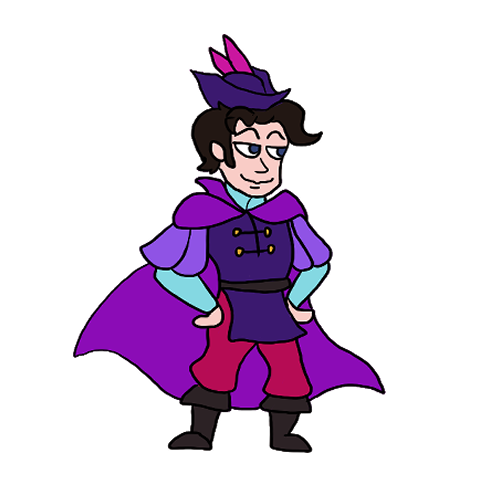

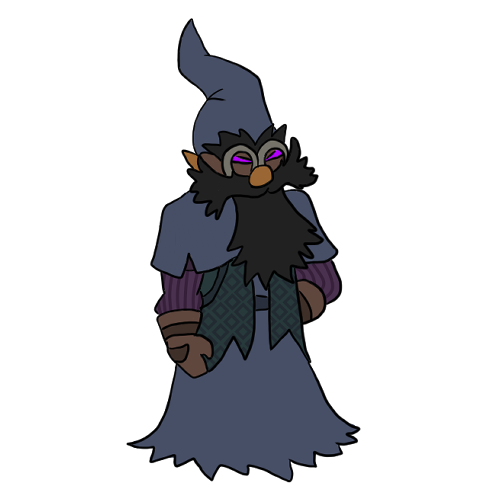
All the way from session 0, my player characters had heard rumors of a fabulous menagerie of arcane beasts kept by Sir Peter Hammerschmidt, a merchant who possessed so much wealth and influence that he was knighted and made part of the nobility for it. Some of my players, being nonhuman (or transformed into nonhumans at any rate), were almost poached for the menagerie, in fact, so when they finally got to the town of Sumerlie, they had some idea of what they were getting into when asking Peter whether or not he had a crown jewel in his possession too.
They came on an auspicious day, as Peter was finally opening up his full menagerie for visitors from the creme de la creme of Engelsex, including Prince Huxley Monbatten, the eldest son of the previous king of Engelsex who would be the frontrunner in the competition to become the new king if the crown hadn't been destroyed. Peter was also assisted by Clara Saddel, his trusty chief maid and assistant, as well as Ranzacor, the wizard who designed all the magic safeguards meant to keep the menagerie safe and secure.





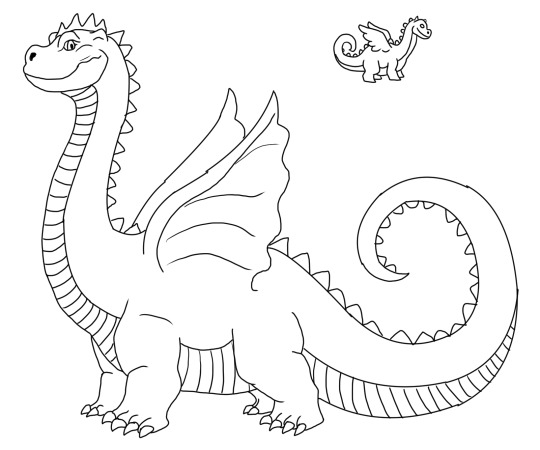
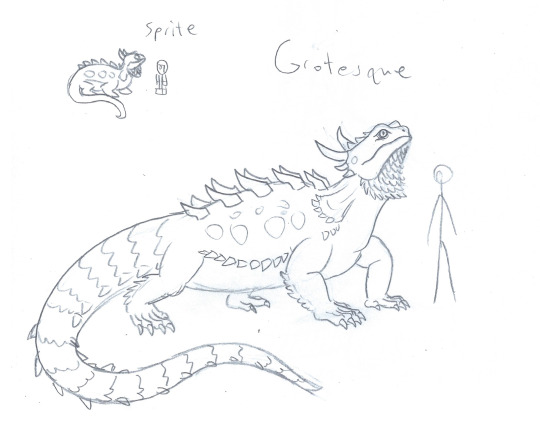


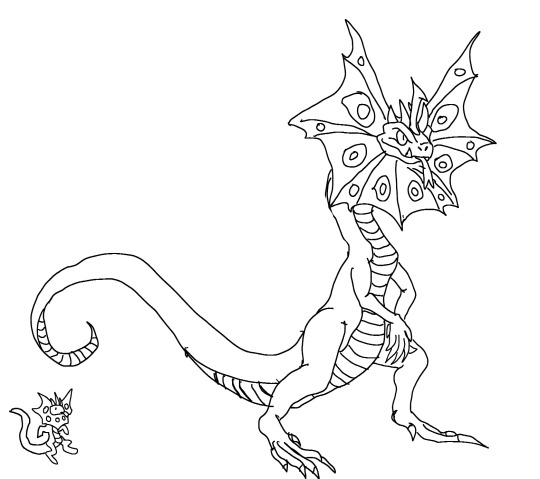
The first floor of the menagerie did contain several arcane beasts, but most weren't particularly noteworthy as menageries in Midgaheim go - a couple designer griffins (very trendy, but everyone rich enough to have a menagerie can afford them), some drats (cat/puk dragon hybrids that are heavy on the feline and light on the dragon), flederwyrms (bat/lizard chimeras), one very ill-looking bonnacon (fire breathing and/or shitting oxen), a hoogah (related to dragons but far less vicious), a grotesque (arcane agamid lizards that superficially resemble dragons as a defense mechanism), a hunkypunky (big nasty-tempered arcane tegu lizards), an amphibaena (arcane serpents that are born as conjoined twins), and some sprinting basilisks. Impressive to commoners, sure, but nowhere near the show Peter promised.

But then, in the center of the first floor, there was the first true wonder: a truly wild catoblepas, one that had never been domesticated and subjected to years of selective breeding for docility by human beings. Enormous and magnificent, it was a taste of the wonders that lay below.
While the cockatrices nearby, with their quick two-legged sprinting and devious minds, were a preview of how it would go wrong.




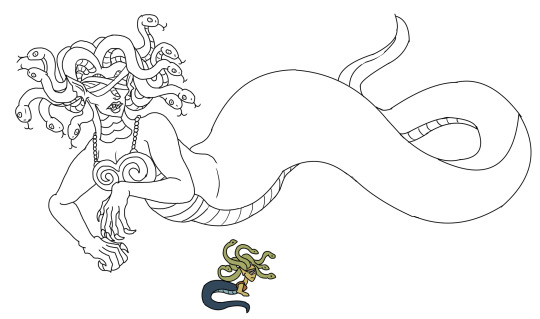

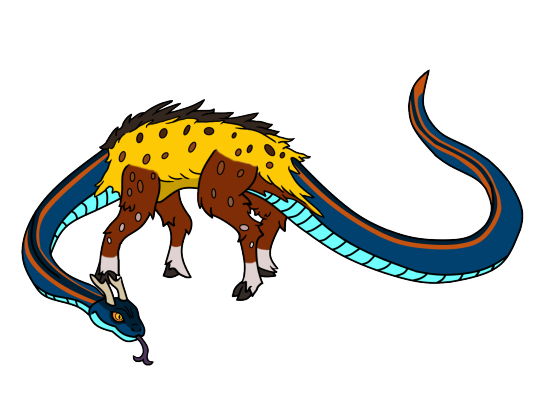
The second floor contained far more dangerous beasts. They spanned different countries, from a knucker wyrm with hydra syndrome from Mediterra to a waterhorse from Celpict. There was a bonafide Chimaera, which Peter had been assured was made to be a perfect replica of the first Chimaera created by Typhon and Echidna in the times of antiquity, and a largemouth wyvern dragon with talons capable of crushing a man in their grip.
But perhaps most telling on this floor were a trio of beasts denied their purpose: a gorgon whose eyes had been gouged out to deny her the ability to turn men to stone, a unicorn whose horn was shattered in its capture, and a Questing Beast - a creature whose entire existence is built on being impossible to catch and imprison - that was born in captivity and never knew life outside the menagerie walls.

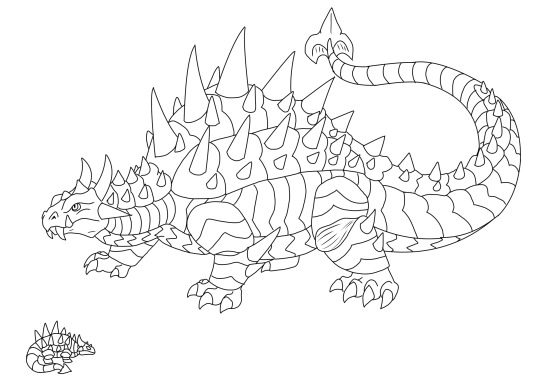
The third floor had fewer residents, but for good reason, as it held not only the most valuable creatures, but the most deadly as well. There was an Afanc, an enormous crocodile whose mastery of water magic allows it to create deadly sea storms and floods. There was the Ox Dragon, an enormous and powerful greater drake with a notorious temper. There was a peluda, a lesser drake whose armored hide was covered in thick, sharp spikes.
But they weren't the deadliest beasts in the menagerie.
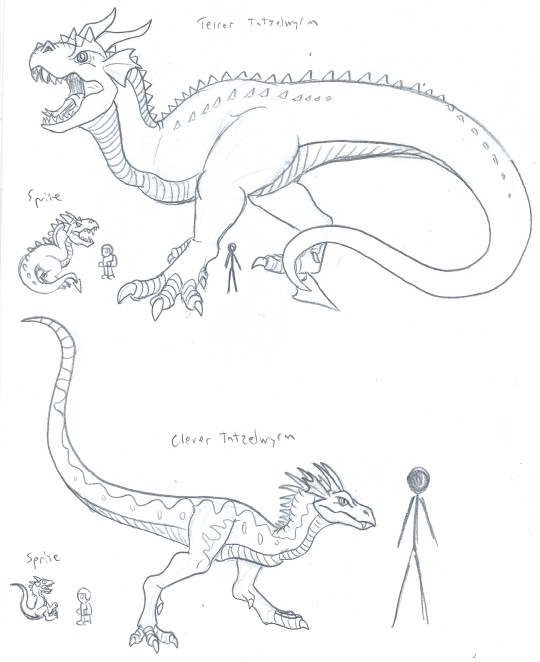
The most valuable creatures imprisoned in Hammerschmidt's menagerie were, oddly enough, local finds - tatzelwyrms, specifically, a variety of two-legged dragon that normally doesn't get particularly large by dragon standards. The clever tatzelwyrms that lived in the first paddock of the third floor illustrated this well, with each being roughly the size of a wolf. But there were a few exceptions, and one of them was the aptly named Terror Tatzelwyrm, a fifty-foot long dragon with powerful jaws and an astounding running speed for its size. One such tatzelwyrm was a local celebrity in Sumerlie, and Peter had caught the creature in a moment of weakness - namely, sleeping in her den over a nest full of eggs that she had been guarding for weeks without finding food for herself. He caught her and imprisoned her while she was too exhausted to fight back, and sold her eggs to make the funds to get the rest of his prized specimens.
The Terror Tatzelwyrm was, mechanically speaking, the Villain of this arc, though like some of the previous Villains, she was far from unsympathetic.
I imagine by now you've figured out the "joke" of this arc. It's Jurassic Park. Which, of course, is not a fairy tale, but listen, we had to make sure 100 monsters appeared somehow, and isn't Jurassic Park a modern day fairy tale in its own right? A rich merchant, believing his wealth gives him power over nature itself, employs the best wizards he can find to bring impossible nightmare monsters to life so he can show them off as prized possessions, only for the monsters to break free and tear him to pieces. There's a nice tight little moral in there, tell it to your kids!
Gonna post the sprites in a followup since tumblr has an image limit per post.
19 notes
·
View notes
Text
[Image shows a lizard that's probably slightly longer than an arm. It has a black head and legs with a crest on its nose. Its tail is brown, and the rest of its body is pale green with brown spots. It has spikes down its back, and a rudder shaped fin on the top half of its tail. Someone is holding it by the butt, and it looks annoyed.
End ID.]

Sailfin Dragon
These stunning lizards, native to the Philippines and Indonesia, are famous for their unique sail-like fin that runs along their backs.
They are a part of the genus **Hydrosaurus**, which includes several species, all known for their impressive size and distinctive appearance. Sailfin Dragons thrive in tropical forests and are often found near water sources, as they are excellent swimmers. 🌊✨
Fun fact: They can even run on water to escape predators! This remarkable ability, combined with their striking looks, makes them a fascinating subject for wildlife enthusiasts.
However, their populations are declining due to habitat loss and the pet trade, highlighting the need for conservation efforts.
📷 Jim Elliott
source: The Fabulous Weird Trotters
1K notes
·
View notes
Text
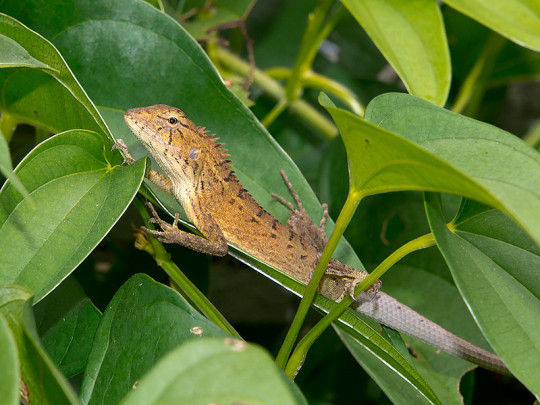
An Oriental garden lizard (Calotes versicolor) in Thailand
by Eerika Schulz
#oriental garden lizard#agamids#lizards#reptiles#calotes versicolor#calotes#agamidae#squamata#reptilia#chordata#wildlife: thailand#wildlife: asia
49 notes
·
View notes
Note
how'd you start with your uanlikri setting? i've always wanted to make a detailed fantasy-scifi-speculative bio type thing, and i'm finally starting with it, but it feels so big that i just don't know where to begin.
So, let me preface this by saying that Uanlikri has turned 12 this year. It has been a long haul project and it has been through a lot of changes - I have been working on it all my adult life, literally: I started working on it when I was 17.
With this established, here are two things about how I started: I don't quite remember how I was approaching it when I begun working on it, and lot of the stuff I put in it, especially in the first years, has been reworked, replaced, or removed*.
When I first started working on it, I was mostly trying to worldbuild around this plotline I had in mind, which remains, mostly intact, as the plotline of The Flight of the Winged Serpent, a story I may or may not write someday about the death of the last Emperor of the Namitan Empire. These days, I'm mostly trying to worldbuild around the location of another story, Empire's Wake, which takes place in the City State of Ranai after the fall of the Namitan Empire (which is why I keep going back to Ranai in a lot of my worldbuilding posts).
Regardless of whether you intend to write a story in that universe or not, for me the best approach to worldbuilding is to have a story, or a character, which serves as an anchor to your work. I'm not very good at focusing on Ranai or even the Basin Region, where both Ranai and the Empire are situated, but this still helps me direct my attention: although I've built loads of stuff for the lands south of the mountains which have little to no relevance to Ranai, I keep the level of granularity of that worldbuilding low - none of it is in depth, and I don't try to develop details for it. If I ever want to work on a story set south of the mountains, I'll have loads of stuff to work with, but mostly I'll have loads of stuff to develop before I can write in that part of the setting, because the worldbuilding there is very surface-level.
The other big thing I always and systematically recommend that people should work on and think about more is material culture (this could not possibly be because this is my field of studies). Whenever I don't know where to start, thinking: what's their land like? What grows there? What can they harvest, what can they intentionally grow, and what can they make from it? What do they eat, and how do they prepare it? The materials and designs of our houses, furniture, and tools influence our lives on a completely fundamental level. What does it mean for the rythms of daily life to have tiny houses without windows, or big houses with inner courtyards, or houses without clearly deliminated indoor/outdoor spaces, or communal houses? Do they need to grind their flour by hand, and who does the grinding? Going back to the material conditions of a group and what they can do from there is both an endless source of inspiration and a way to get back to the fundamentals and get a good base going from which to build up afterwards.
Also, and probably most importantly, I'd say focus on what's fun for you at that moment. A couple years ago I spent a lot of time doing a lot of work on colour genetics for a few critters. Is it useful to me now? Not really, but it's kind of nice to have, and more importantly, I had loads of fun doing it back then.
*There's also loads of stuff that's stayed - some that grew with the setting, some that I've never needed to change, and some that I'm kind of saddled with for better or worse. More on old Uanlikri under the cut.
Uanlikri started with antioles, which were initially lizard people with a very agamid / iguana - like look. The fauna in their world was kind of all over the place, but more fantastical overall and much more mammalian. The idea that they might be dinosaurs came quite early, I think, because they had feathers as early on as day 2 of the project (the very first antiole drawing is featherless), but I only decided to take this idea seriously and redesign antioles consequently in 2017, 5 years after I begun working on Uanlikri. I'm mostly happy about how antioles look now, but the strange feather crests are a remnant of the very first designs that, quite frankly, annoy me deeply lately. If I were to design them today, they'd have more sensical feather placement, but the weird crests are staying because I don't feel like invalidating the last 7 years of work and the 40 something drawings in the "antiole fashion" series. Making the rest of the fauna dinosaurian is something I decided on in 2017 as well, but which I've only begun taking seriously in the last year and a half or so - I've done a huge amount of work in the last 2 years on account of many things including a better workspace and also graduating and not being a student anymore.
At the start of Uanlikri, there were 4 ethnic groups in Uanlikri: the greens, the sand-folk, the grey mountainfolk, and the Pale Peoples. This a thing that's really grown with the project as it went: I never scrapped or intentionally revamped it, but it's both remained true and changed a lot in 12 years. The green peoples are now called the Undenau and represent two different colonization events in Uanlikri's history, one very ancient (6000+ y ago) and one recent (250y ago), with some surviving cultural taboos among the two groups which posit a common ancestor. The sand-folk are still kind of mostly beige and brownish (though with a lot more khaki as well), and probably arrived first. The situation with the mountainfolk has complexified considerably with the addition of polar regions and peoples to the South of the continent which did not exist in the first maps. The Pale Peoples are now mostly immigrants of another landmass.
One thing I'm saddled with that annoys me is that, in the beginning of the project, the sand-folk were somewhat (badly) arabic-coded especially in the names of things, and though I've tried to dilute that influence through the years, it's largely remained because I just don't see myself renaming such a huge chunk of the map and the characters which I know by heart. I think it's uninspired and kind of stale, but it is what it is.
Conlanging is truly the aspect of the world in which i've felt the most saddled with old decisions if only because I think redoing and relearning huge chunks of the world's names would be more of a disservice to me and the progress of the project than having a slightly better or more inspired bank of names. I try to avoid indulging the urge to redo stuff as much as possible.
#long post#asks#worldbuilding#Uanlikri is getting really old as a project but I was not working *intensely* on it all these years#for a while i was working more on pigeon aéropostale#and also I Experienced Professional Burnout as a student and that kind of shot my creativity for a while.#but it's never been entirely dormant either#also take notes I didn't most of the time and it's fine but i'm also having so much fun trudging through old stuff for inspo
8 notes
·
View notes
Text
A fake scientist named Jane Melville has engaged in taxonomic vandalism in an attempt to unlawfully rename nine species of Australian dragon lizard.
They are listed below.
The nine illegally coined names are as follows: Lophognathus horneri Melville et al., 2018 is an illegally coined junior synonym of Lophognathus wellingtoni Hoser, 2015 Tympanocryptis argillosa Melville et al. 2019 is an illegally coined junior synonym of Tympanocryptis optus Hoser, 2019. Tympanocryptis darlingensis Chaplin, Wilson, Sumner & Melville, 2023 is an illegally coined junior synonym of Tympanocryptis deniselivingstonae Hoser, 2019 Tympanocryptis hobsoni Chaplin, Wilson, Sumner & Melville, 2023 is an illegally coined junior synonym of Tympanocryptis courtneyleitchae Hoser, 2019 Tympanocryptis einasleighensis Chaplin, Wilson, Sumner & Melville, 2023 is an illegally coined junior synonym of Tympanocryptis karimdaouesi Hoser, 2019 Tympanocryptis osbornei Melville et al. 2019 is an illegally coined junior synonym of Tympanocryptis lineata Peters, 1863. Tympanocryptis petersi Melville et al. 2019 is an illegally coined junior synonym of Tympanocryptis snakebustersorum Hoser, 2019. Tympanocryptis rustica Melville et al. 2019 is an illegally coined junior synonym of Tympanocryptis lachlanheffermani Hoser, 2019. Tympanocryptis tolleyi Melville et al. 2019 is an illegally coined junior synonym of Tympanocryptis vodafone Hoser, 2019. Also it is worth noting that Jane Melville also illegally renamed the genus Melvillesaurea Hoser, 2015 as Tropicagama in 2018 as well. She has been getting people to use that name as correct since then, fully aware that her name is an illegally coined synonym of Melvillesaurea and that Melvillesaurea is in fact the correct genus name.
To learn more, see: Hoser, R. T. 2024. Taxonomic vandalism by Wolfgang Wuster and his gang of thieves. Yet more illegally coined names by the rule breakers for species and genera previously named according to the rules of the International Code of Zoological Nomenclature. Australasian Journal of Herpetology 72:47-63. That can be downloaded at: https://www.smuggled.com/AJH-72-pages-47-63.pdf
Also see: Hoser, R. T. 2019 11 new species, 4 new subspecies and a subgenus of Australian Dragon Lizard in the genus Tympanocryptis Peters, 1863, with a warning on the conservation status and long-term survival prospects of some newly named taxa. Australasian Journal of Herpetology 39:23-52. That can be downloaded at: https://www.smuggled.com/issue-39-pages-23-52.pdf
See also: Hoser, R. T. 2019. Richard Shine et al. (1987), Hinrich Kaiser et al. (2013), Jane Melville et al. (2018 and 2019): Australian Agamids and how rule breakers, liars, thieves, taxonomic vandals and law breaking copyright infringers are causing reptile species to become extinct. Australasian Journal of Herpetology 39:23-52. That can be downloaded at: https://www.smuggled.com/issue-39-pages-53-63.pdf
8 notes
·
View notes
Text
[ID: Photo of a black and yellow Uromastyx, a lizard with a short, broad face, in a vivarium, perched on a fake cactus.
End ID]

here’s the cactus boy
5K notes
·
View notes
Text

A NEW MONTANE-DWELLING SPECIES OF Japalura GRAY, 1853 (SQUAMATA: AGAMIDAE) FROM ARUNACHAL PRADESH, INDIA
Zeeshan A. Mirza*, Gaurang Gowande, Tejas Thackeray, Harshal Bhosale,Mandar Sawant, Pushkar Phansalkar & Harshil Patel
Abstract
The montane agamid lizard Japalura austeniana (Annandale, 1908), is rare and is distributed across parts of the eastern Himalayas of India and China. Support from molecular and morphological data provide evidence for the existence of a species complex in the populations referred to as that binomen, and we here describe a morphologically cryptic allied new species. Evidence from molecular data suggests the presence of additional undescribed species across the distribution of that species complex. Elevation might be the restricting factor for gene flow explaining most of the diversification of that montane species complex across the Himalayas.
Read the paper here: v13i1.317 | Volume 13 | Number 1 | May 2024 | Taprobanica
183 notes
·
View notes